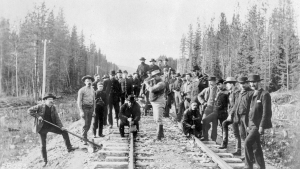Adjudicators are seeing an increase in the number of adjudications and although the majority to date have been in the residential and roadwork sectors, others may be on the rise, said Ted Dreyer, partner at Madorin, Snyder LLP, during a recent webinar.
Dreyer, who is an adjudicator, discussed trends in a webinar billed What You Really Need to Know About Adjudication, part of WeirFoulds LLP’s Tools for Success series.
“My perception and the conventional wisdom is that COVID actually depressed the number of adjudications we would otherwise get,” said Dreyer.
The most recent numbers released in August show there was an increase over the summer.
“At that point there were 39 adjudications in process,” said Dreyer. “That’s the good news. We’re seeing an uptick in adjudications. The bad news is that we’re starting off with a very low number. Between October 2019 when the system started and August 2022 there were only 209 adjudications that had been started and only 109 of those had actually gone through the entire process.”
In terms of the sectors that are seeing the most adjudications, Dreyer said about half is residential.
“We don’t have a lot of insight into exactly what kind of residential because that’s a very diverse sector,” he said. “You have new build single-family, you have multi-residential and you have renovations…the stats don’t tell us what kind of residential work is triggering these adjudications.”
The next largest category for adjudication is roadwork.
“I think we have seen one of the bright spots for prompt payment and adjudication has been contracts entered into with municipalities,” Dreyer noted.
“Anecdotally, I’m told municipalities have generally really increased the speed of payment and they’ve not been resisting the idea of going to adjudication.
“What we haven’t seen a whole lot of is adjudications in the ICI sector, with the exception of some municipal work, but I think that’s probably where we’re seeing the increase now.
“The grandfathered projects to which adjudication didn’t apply they’re done and now the industry has moved on to contracts where adjudication does apply.”
In terms of starting the adjudication process, one needs to complete the notice of adjudication online on the Ontario Dispute Adjudication for Construction Contracts (ODACC) website. Selecting an adjudicator that has expertise in the sector is important, Dreyer said.
“I think there is a misconception out there that if you allow ODACC to appoint someone they will look at the dispute and appoint someone that has expertise and that’s not how it works,” he pointed out.
“To take advantage of the system and make it work best, there is a real premium on agreeing with opposing counsel or the opposing party on who it is that you should have decide your dispute.”
Although it is not in the regulations, the general practice is the adjudicator will convene a preliminary call between the parties to set the process.
“As claimant you have to realize that the burden of proof is on you and adjudications, they happen fast,” said Dreyer.
“The amount of evidence that is before the adjudicator is going to be nowhere near the amount of evidence that is going to be before a judge so there are going to be gaps in the evidence and those gaps generally hurt the claimant.”
Dreyer noted most adjudications he has seen are related to payment under the contract.
“What’s surprising to me is I haven’t seen any adjudications arising from a notice of non-payment which suggests to me that I think adjudication has a little traction now,” he said.
“I haven’t seen a lot of disputes regarding change orders.”
In terms of tips, he stressed the importance of proper invoices.
“I don’t think everyone appreciated at the outset of this process how important proper invoices would be because there are little nuances where what is required for a proper invoice under the act — we’re only talking about invoices that are delivered by the prime contractor to the owner – they are a little different from what the industry has traditionally gotten,” said Dreyer.
“Even though the objective of the act was to expedite payment in most cases, the general failure of the industry to get up to speed on what a proper invoice is is acting as a bit of a bottleneck.”
He also reminded viewers that the right to go to adjudication stops when the contract is complete.
“That is a real shame because that’s normally when you want to engage in dispute resolution process,” said Dreyer.
“(It) is why we’re not seeing any claims dealing with holdback because that’s the glitch in the act… In many cases holdback is not payable until the work is complete and the contract is complete.
“My tip is for both contractors and subcontractors to insert a term in their quote or insert a term in their contract…to extend the right to refer disputes to adjudication by at least 90 days, ideally more. It really works to the advantage of both parties.”
Follow the author on Twitter @DCN_Angela





Recent Comments